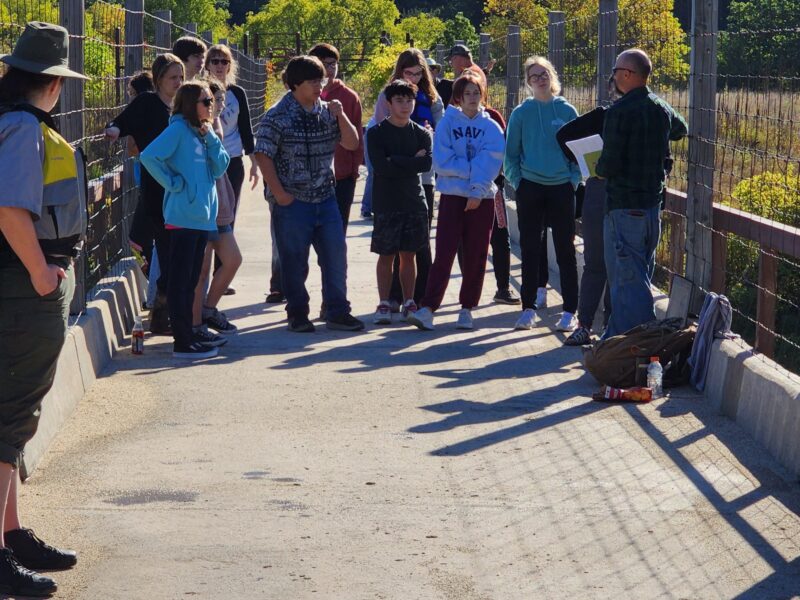Editor’s Introduction:
In this EQuIP, NeWP co-director Shelby Schmidt guides her students into an exploration of photojournalism ethics using the practices of the College, Career and Community Writer’s Program (C3WP). The Nebraska Writing Project routinely uses the EQuIP to help teachers discover and share practices in their classrooms. This lesson demonstration sequence asks the teacher to consider an area of Expertise (a class practice that engages students in deep learning), a Question (an area of inquiry that a teacher is digging into), an Issue (in education) or a Problem (a lesson that just won’t work for some reason). Each Summer Institute includes daily EQuIPs, establishing the best practices of teacher’s teaching teachers – a practice which sets the Writing Project apart as one of the premier professional development programs in the nation (for all teachers) (Urquart and McIver 2014).
Shelby’s lesson leads students through a text set on photojournalism ethics, asking them to write and revise their writing after each text. The writing goal of the lesson – connecting evidence to claims – is one that takes a lot of practice to master. Based on the C3WP mini-unit Connecting Evidence to Claims, Shelby’s lesson keeps the core steps of the lesson sequence and introduces her own topic and text set.
Nebraska Writing Project EQUIP: Photojournalism Ethics
Description of Activity:
This activity will highlight the key resources the College, Career, Community Writer’s Program provides and immerse participants in an argument writing activity that was adapted from these resources. This activity focuses on photojournalism ethics as a way to show how argument writing can be implemented. Participants will go through steps, adapted from the C3WP’s lesson on “Connecting Evidence to Claims,” to write an email to their Editor to determine if a controversial photo should be printed in the newspaper. (See the handout for step by step writing prompts.)
Goals:
The goals of the EQUIP include
- Participants will be able to identify the key features of the C3WP Framework
- Participants will be able to use various viewpoints to form a claim
Rationale:
Teachers – English teachers specifically – have been pushed to integrate more argumentative writing and nonfiction texts into their curriculum. Students often see arguments as a chance to debate rather than dialogue (Harris 36). Providing students with language that is easily accessible and scaffolding opportunities for them to analyze various viewpoints to form an opinion will serve them as more engaged citizens and agents for change.
Supplies Needed:
- Computer that can highlight
- Internet Access
Steps for Activity (See included PowerPoint in Google Drive Folder):
- Presenter will introduce the C3WP Framework and resources available through the C3WP website
- Introduce Harris Moves and the Table Metaphor
- Large group discussion on who we would invite to the table for controversial photos when it comes to publication
- Take participants through a guided activity in sources around the Falling Man photo from September 11, 2001 (as seen in handout)
- First participants will engage with the photo without any sources
- Second, participants will explore the Code of Ethics provided by the Society of Professional Journalists
- Then we will brainstorm voices that should be brought to the table
- The large group will then listen to a video clip of the photographer discussing why he took the photo
- While listening, participants will record quotes from the photographer that complicate their thinking about whether to run the photo
- Following the video, participants will answer questions to inform whether they would run the Falling Man photo or not
- The presenter will then read an excerpt from the Esquire article that named the photo while participants highlight for key pieces of evidence that either confirm their decision or push against their decision
- Participants will write a letter to the editor about whether they believe the photo should be printed or not (time permitting)
Extensions:
- This is usually how I introduce students into this style of writing in journalism class and then we move into writing entertainment reviews and opinion pieces and continue with the various moves and text sets as common language from the previous unit. Eventually, I want these types of works to lead to publication to the community.
Applications/Adaptations to own work in classroom/school/district:
- This was already an adaptation of an existing exercise for students in an elective class
- Curate personal text sets that fit with your subject at hand
- You can also pick and choose between the lessons on the C3WP website. You do not need to always use the text set that
- I have listed the topics for students during our opinion writing units and they chose the one that interested them most
- Have students curate their own text sets in lower-stakes settings as practice for larger research projects
- Work across disciplines to have students come to terms with different viewpoints from issues in different classes to create public writing pieces that have used text sets
- The ACT asks for argumentative writing, and as that is the Nebraska state writing assessment, you could prepare students for this style of writing
Resources:
C3WP Resources: https://sites.google.com/nwp.org/c3wp/instructional-resources/connecting-evidence-to-claims
Research:
C3WP, National Writing Project , https://sites.google.com/nwp.org/c3wp/home.
Harris, Joseph. Rewriting: How to Do Things with Texts. Utah State University Press, 2006.



